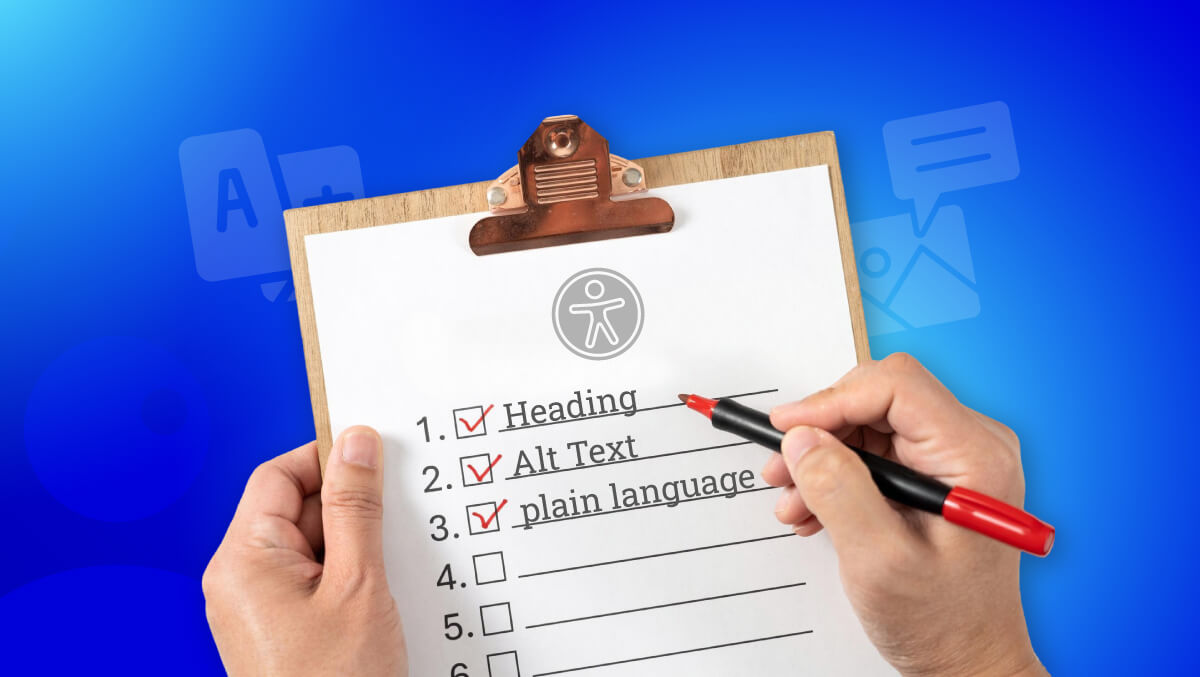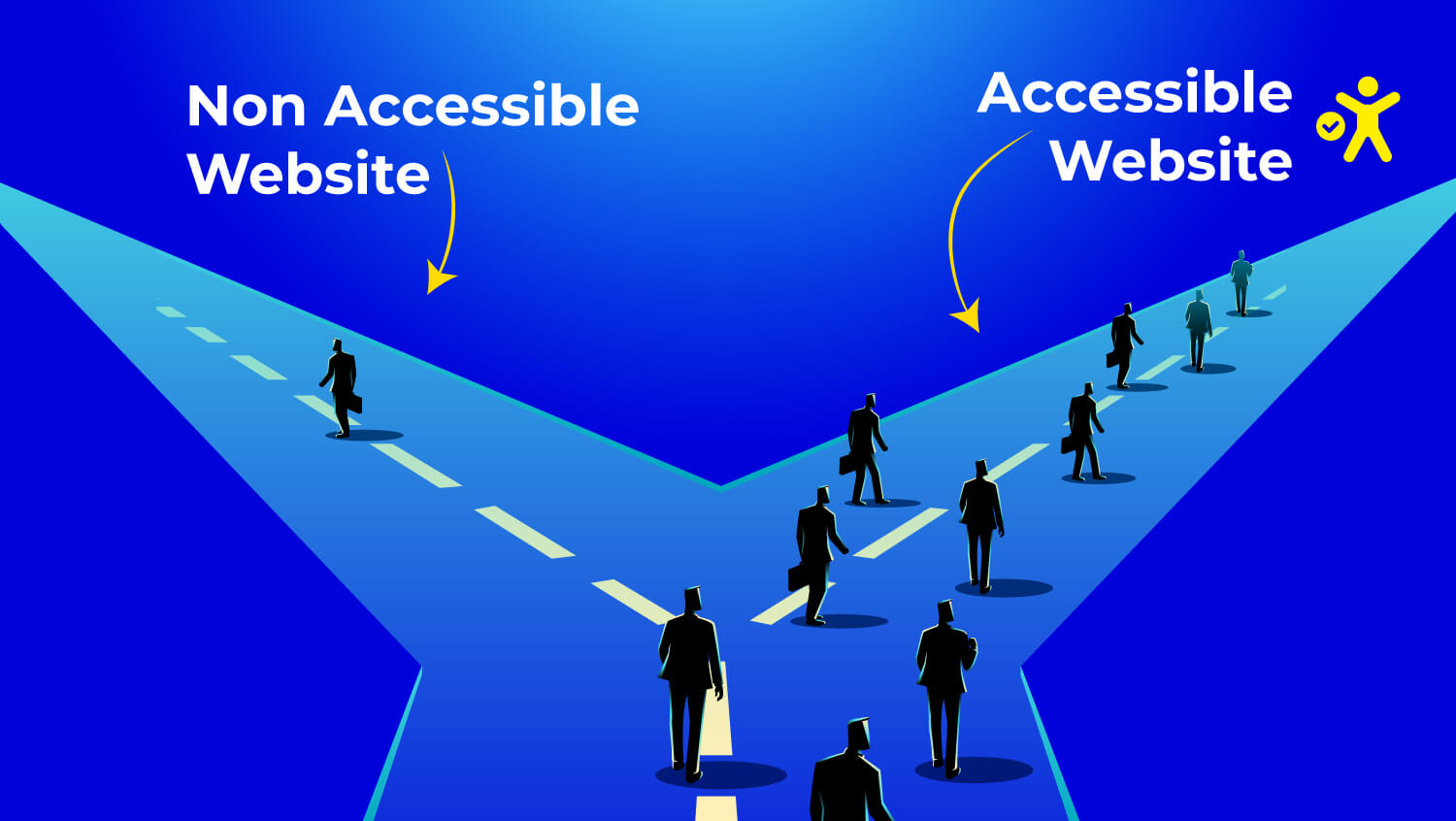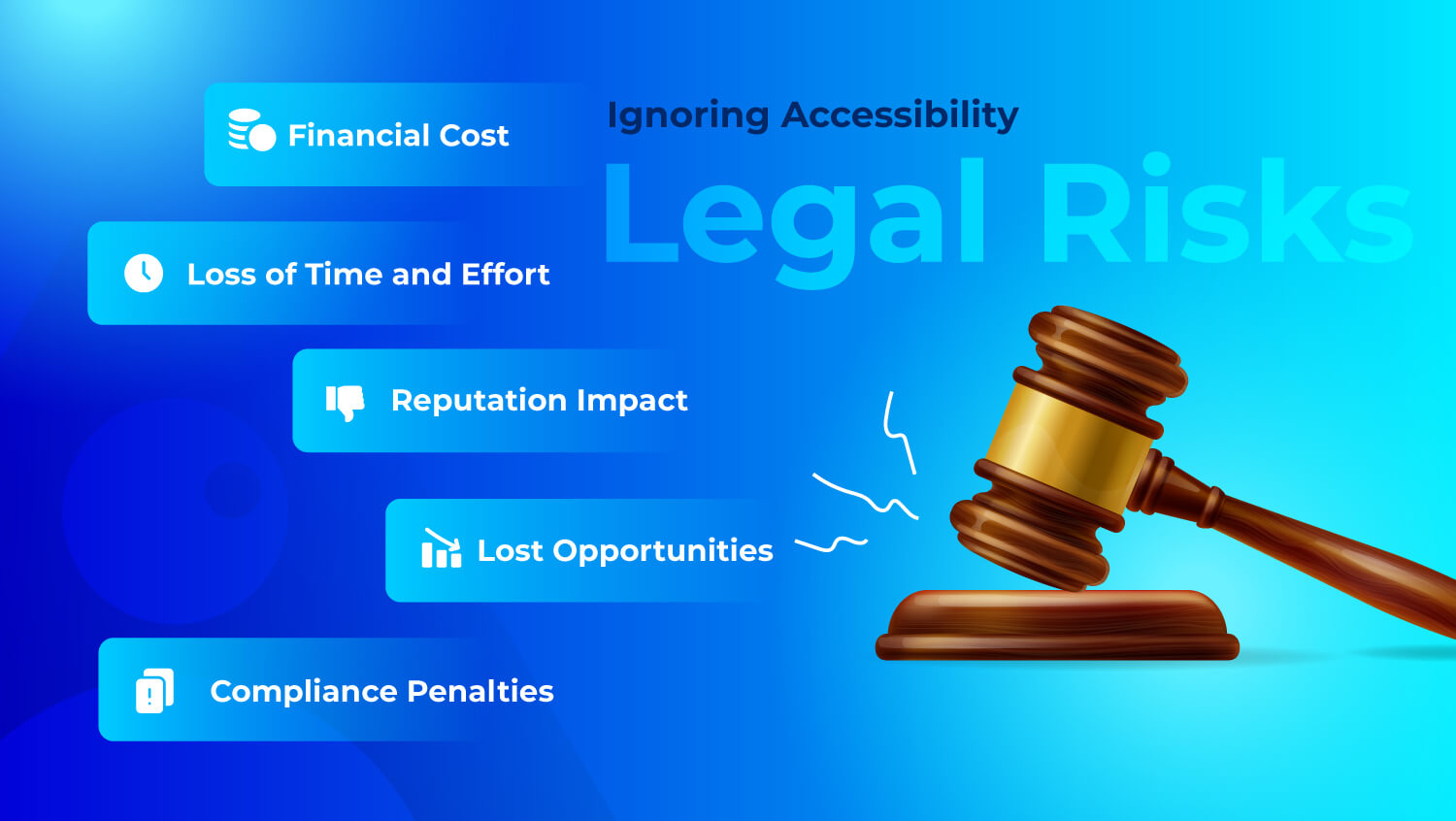Accessibility Overlays Explained: Benefits, Myths, and Smarter Alternatives
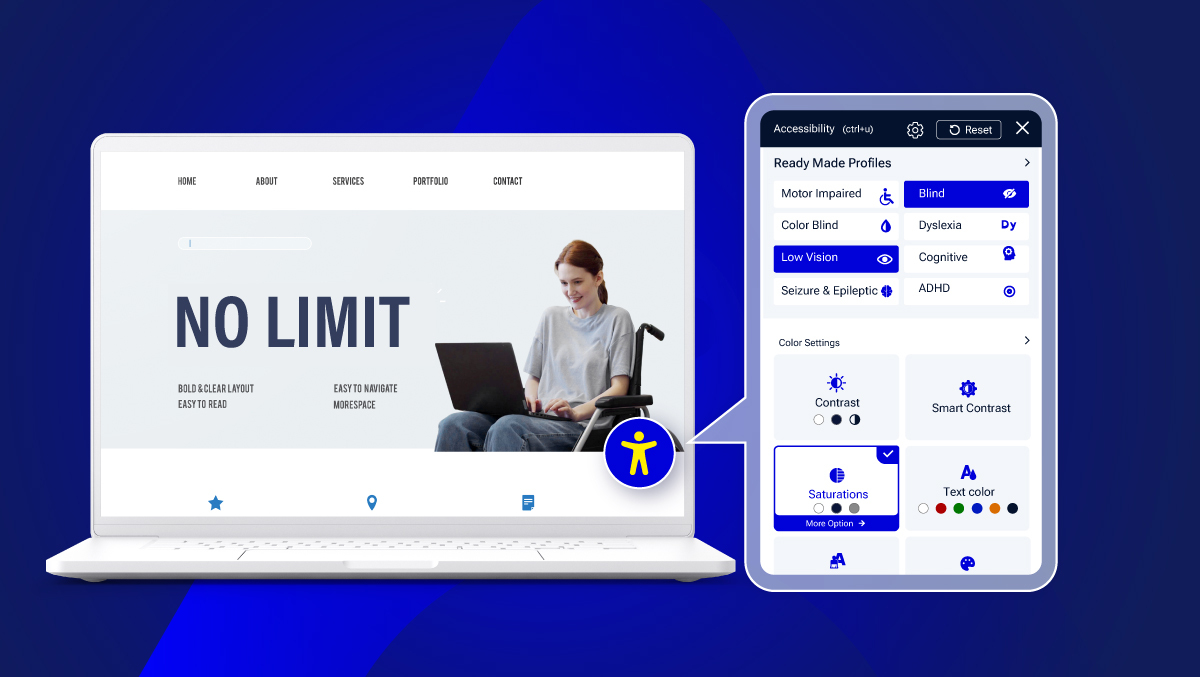
Understanding Accessibility Overlays
Accessibility overlays are software tools that sit on top of an existing website to help people with disabilities interact with the site. Instead of changing the underlying code, they send an additional layer of accessibility features to the front end.
The tools are often selected by companies who want a short-term solution that can promote inclusivity, without having to redesign or rethink. The World Health Organization suggests there are 1.3 billion people globally living with a significant disability, which suggests a pressing need for accessibility (WHO).
How They Work
Overlays work in "live-time"; they scan a website for accessibility barriers and automatically change how the content displays. For example, overlays can resolve contrast issues, re-organize headings displayed to screen readers, and add ARIA attributes that may have been missed.
Many overlays also allow the users to have options for customization. Visitors can enlarge text, alter font type, switch colors for contrast, and also enable text-to-speech conversion. The adaptations that so many overlays provide with respect to alterations focus on compliance with standards such as WCAG 2.2 (W3.org).
Examples in Action
A common example, for instance, would be a small accessibility widget, or icon, that is anchored to the corner of the page.
When the user clicks on the accessibility widget, it expands into a menu of options, which may include text size changes, color filters for colorblind users, and navigation aids for word-processing keyboard-only users.
The overlays that are popular today are often available as browser plug-ins, JavaScript widgets, or even your cloud-based accessibility add-ons.
Real-time support, automated checks, and user personalization are all offered by specific tools such as Access Assistant or Access Monitor from Accesstive to match modern accessibility requirements.
Why Businesses Turn to Accessibility Overlays
While millions of websites remain inaccessible, with global accessibility standards recommended, one study by WebAIM found that, in 2023, 96.3% of home pages had detectable WCAG 2.1 failures (WebAIM, 2023).
Overlays help close the gap on this problem because they immediately offer basic accessibility advances with little initial effort; organizations are not immediately required to rebuild the entire website.
And, for most, overlays are the initial simple way to begin to include users with vision, hearing, mobility or cognitive disabilities.
Scalability
For large companies and small businesses, it can be challenging for any individual page or feature to be fully accessible. Overlays typically scale quickly, applying the accessibility modifications to thousands of pages at one time.
This is why overlays are appealing to businesses that have webpages that are constantly changing, think of any eCommerce site, for example, that is always adding new products and new pages. Instead of having to retrofit each of those individual pages or elements, overlays provide fixes for everything at once and in real-time.
Reducing Legal Risks
Lawsuits concerning accessibility have seen a significant rise all over the world. In the U.S. alone, there were reported 4,500 cases in 2023 relating to digital accessibility under the Americans with Disabilities Act (ADA).
Overlays do not offer a total legal safe harbor, but at least it demonstrates that the organization is heading in a positive direction and may reduce their exposure to lawsuits and make good faith efforts towards long-term compliance.
Benefits of Accessibility Overlays (When Used Right)
Overlays can provide instant benefit tools that include text resizing, high-contrast modes, and keyboard navigation. For individuals with low vision, color vision deficiency, or motor impairments, these tools may render a website functional immediately.
Research shows that 75% of people with disabilities will leave a website that is not accessible (Click-Away Pound). By having instant features, businesses can keep visitors engaged to minimize losses.
Ease of Integration
Overlays differ from comprehensive redesigns as they are straightforward to implement. Most function as a single line of code or a plug-in that can be added to the current website in minutes. This is enticing for teams without accessibility skilled expertise in-house.
While they should not be considered a substitution for manual remediation, overlays often offer a quick option to improve accessibility numbers and provide a visible sign of commitment to inclusion.
User Personalization
One of the biggest advantages of overlays is the ability for users to modify websites to suit their own needs. A person with dyslexia may want to have a reader friendly option on the site, while a person with low vision may want to turn on zoom or change the contrast.
By giving flexibility to users, you are taking the user-first approach, which satisfies part of the principle of accessible web design "perceivable and operable content". By putting the control in the users' hands, overlays assist in providing a more accessible browsing experience.
Debunking Misunderstandings About Accessibility Overlays
Let's debunk some of the common misunderstandings about Accessibility Overlays:
"The overlays all do the same thing"
False. Although overlays can differ greatly in quality, scope, and compliance levels—not to mention some are simply widgets that change colors or sizes, while others do real-time WCAG scanning, user personalization, and ongoing monitoring. Choosing the right tool is critical.
“Automated tools make sites less accessible”
Automation is not an enemy. Poorly designed overlays may create obstacles, but well-designed solutions can create some accessibility by remediating missing attributes, improving navigation, and providing support for screen readers. They need to be thought of as a supporting service and not a replacement for coding level remediations
“They slow down websites”
Today's accessibility overlays are lightweight and have been optimized for the web. When implemented properly, overlays will load asynchronously to the rest of the site so that they do not impact site speed or SEO. This is when the performance would be degraded, if at all, by the implementation defects or mistakes made earlier in the implementation process, not the accessibility overlay.
“They only work when users switch them on”
While many overlays offer an on-demand accessibility menu, the best ones also enhance accessibility in the background to benefit all users. For example, overlays can often remediate headings for screen readers or even keyboard navigation, without the user clicking anything.
Challenges and Limitations of Overlays
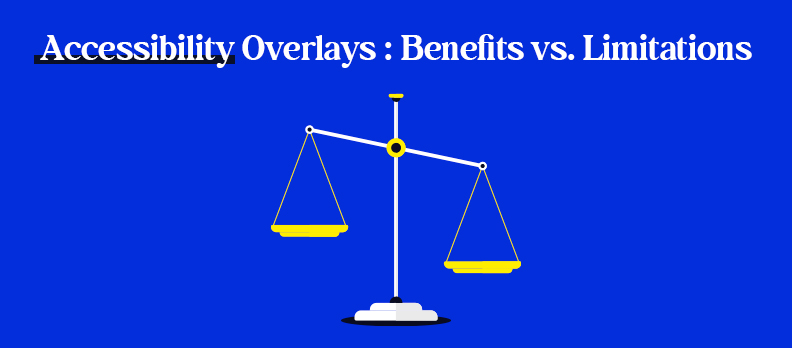
Let's uncover some of the challenges and limitations of Accessibility Overlays:
Not a Complete Solution
Overlays can help fix accessibility at the surface level but do not remediate accessible coding problems. The notions of missing alt text, semantic structure and etc, still remain in the source. According to WebAIM's 2023 study, 96.3% of websites had detectable WCAG failures, suggesting that surface intervention alone does not solve the problem (WebAIM, 2023).
Compatibility Issues
Some overlays can conflict with assistive technologies like screen readers or custom browser settings. When two tools are both trying to control the same functionality, users may be confused rather than helped. That's why overlays, should be tested with real users who have assistive tech, before launching.
False Sense of Compliance
Leaning solely on overlays might lead organizations to believe they are 100% ADA or WCAG compliant, when in actuality it is widely held in court cases that an overlay alone is not enough to be legally protected. Additionally, to ensure accessibility there must be continuous auditing, remediation, and user testing, as well as an overlay solution (ADA.gov, 2023).
Smarter Alternatives & Best Practices
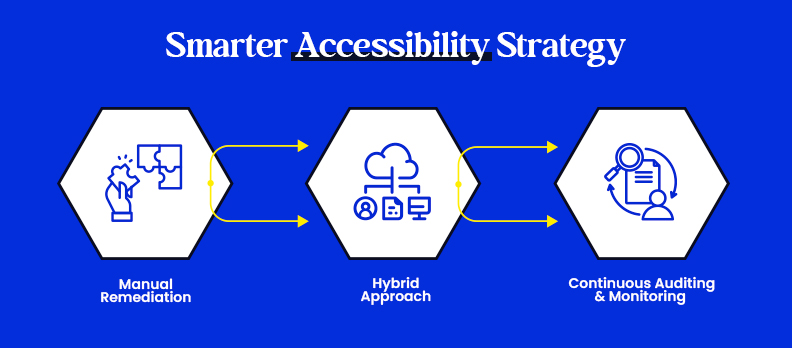
Let's dive into the world of smarter alternatives of Accessibility Overlays:
Manual Remediation
The best way to improve accessibility is on the code level. Addressing problems like missing alt text, wrong heading structure, incorrect keyboard navigation, all lead to long-term compliance. These are mandatory fixes that build an accessible site, not an overlay that makes high-level changes.
Hybrid Approach
Overlays can provide quick user-facing fixes, but long-term success comes from combining them with professional remediation. Access Services helps businesses close critical accessibility gaps, offering expert audits, developer fixes, and guidance to align with WCAG and ADA requirements.
Continuous Auditing & Monitoring
Accessibility is never one-and-done; sites evolve, and new content may introduce barriers.
- Run in-depth compliance checks with Access AI Audit to uncover WCAG/ADA issues.
- Track ongoing accessibility performance with Access Monitor, which scans your site regularly and alerts you to regressions.
Together, these tools ensure accessibility improvements are sustained over time, not lost after a single update.
Final Thoughts: Are Accessibility Overlays Worth It?
Accessibility overlays can be a useful surface-level jump start. They deliver instant improvements, give users more accessibility control, and demonstrate an organization’s commitment to inclusion. However, they are not the complete solution. True accessibility comes from fixing issues at the code level and maintaining compliance over time.
A balanced strategy works best. Overlays enhance usability, while Access AI Audit and Access Monitor track long-term accessibility health and make it manageable. For businesses ready to go deeper, Access Services offers expert remediation and consulting. Running a Free Accessibility Audit is often the simplest way to see where you stand and decide on the next steps.
In short: overlays are worth considering, but only as part of a broader accessibility strategy. Companies that combine overlays with audits and professional fixes lower their legal risk and deliver a truly inclusive experience for all users.
FAQs
Accessibility overlays are software tools added to websites to improve usability for people with disabilities. They provide features like text resizing, color contrast, and screen reader adjustments without changing the site’s core code.
Overlays can be helpful as a quick fix, offering instant improvements for users. However, they should not replace proper coding and manual remediation, which ensure long-term accessibility compliance.
The main issue is that overlays don’t fix underlying code barriers. They may also conflict with assistive technologies, create a false sense of compliance, and don’t fully protect against accessibility lawsuits.
The four main types are visual, auditory, motor, and cognitive accessibility, covering needs from screen reader support to alternative navigation methods.
According to accessibility guidelines, the five barriers are visual, hearing, motor, speech, and cognitive. Each requires different design considerations to ensure equal access.


